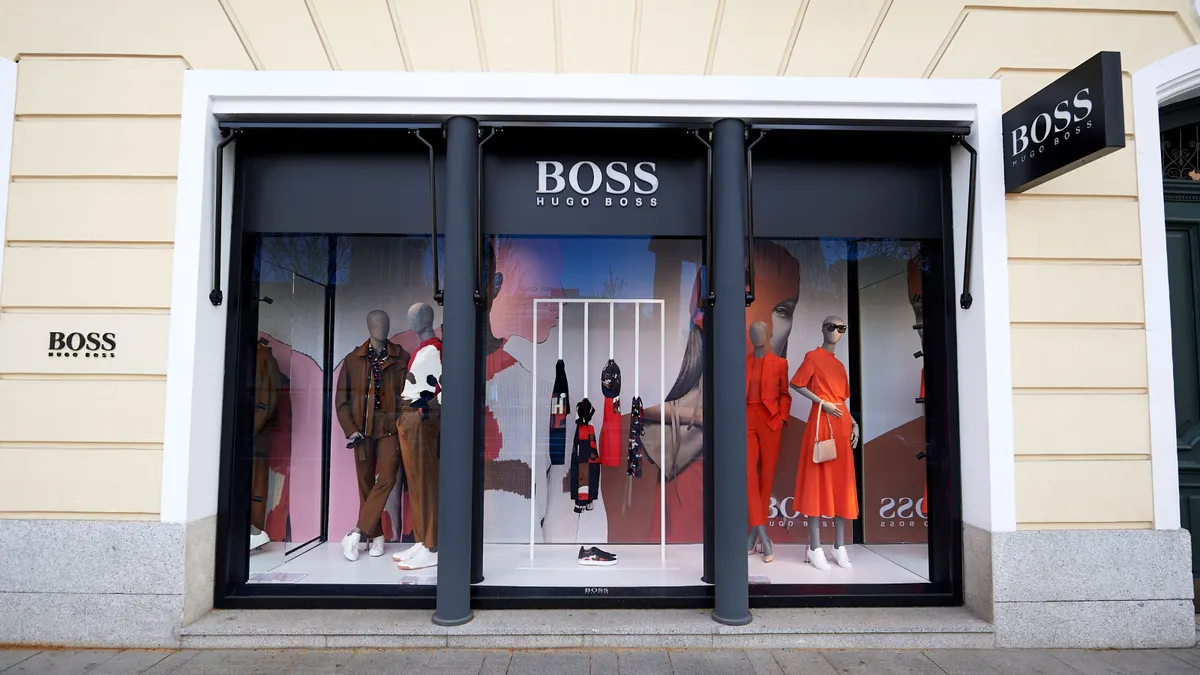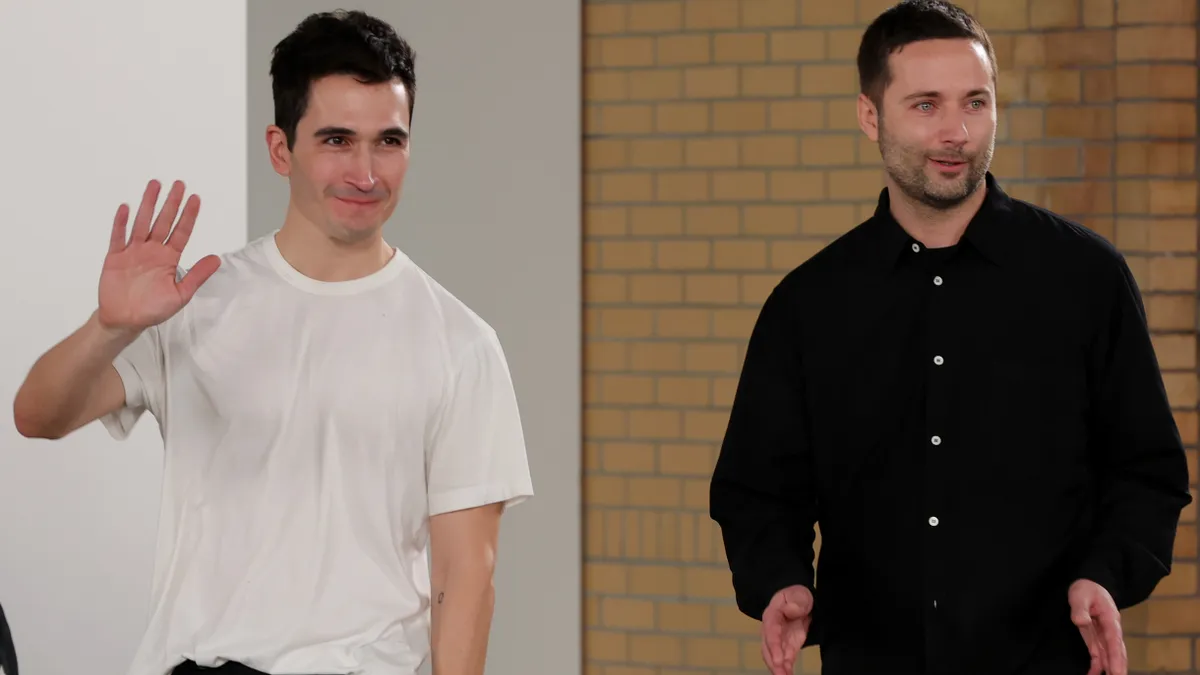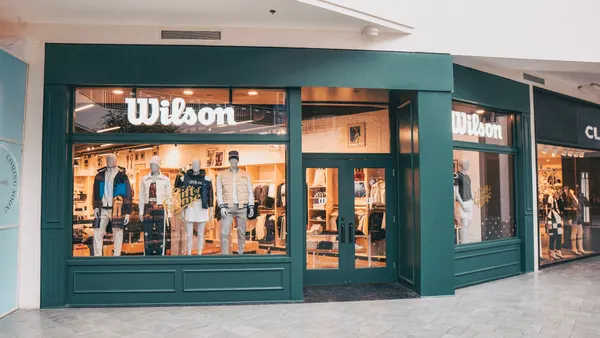Dive Brief:
- Hugo Boss group sales fell 2% in the first quarter of 2025 to 999 million euros, or about $1.1 billion, according to a Monday earnings release. The company attributed the decline in part to increased global macroeconomic uncertainties, particularly in China, and a notable deterioration in U.S. consumer spending.
- Brick-and-mortar retail revenue fell 4% to 473 million euros year over year, and wholesale revenue was down 3% to 296 million euros for the period. Digital sales rose 5% to 204 million euros, and licensing sales, which include fragrances, watches and eyewear, jumped 10% to 20 million euros.
- The company’s Boss menswear brand posted a 1% year-over-year revenue decline to 766 million euros, while Boss womenswear remained flat at 70 million euros and Hugo brand revenue fell 2% 163 euros for the quarter.
Dive Insight:
Hugo Boss reaffirmed its modest 2025 revenue outlook of 2% down to 2% up, which it previously projected in its full-year earnings posted in March. Nonetheless, the company cautioned in its release that elevated macroeconomic volatility, intensified ongoing tariff uncertainty and subdued global consumer sentiment all impacted the larger fashion industry.
Revenue in the Americas for Q1 declined 3% to 212 million euros, which Hugo Boss attributed to a moderate sales decline in the U.S. market, reflecting subdued demand from both domestic consumers and international tourists.
In Europe, the Middle East and Africa combined, year-over-year Q1 revenues remained nearly flat at 631 million euros. Meanwhile, Asia/Pacific sales dropped 6%, although Japan posted double-digit growth, per the release.
In a call with investors, CEO Daniel Grieder said it was too soon “to draw final conclusions” about the rest of the year, but that the company was “taking the current tariff regime into consideration.”
Grieder added that the U.S. market, which represents about 15% of company sales, had minimal exposure to China/U.S. tariff policy shifts.
“Goods sourced from China account for only 4% of our U.S. sourcing volume,” he said. “Meanwhile, roughly one third of inbound sourcing stems from Turkey and Peru — both unaffected by the current tariff discussions.”
In order to “mitigate the impact of tariffs already in place and absorb potential cost effects,” Grieder said the company would redirect products coming from China to the U.S., and replace them with items from other markets in order to “minimize the amount of merchandise flowing from China to the U.S. in the short term.”
He added that the company would also consider price adjustments.
“In any case, we would adopt a demand-sensitive pricing strategy to maintain our strong brand perception and our superior price-value proposition,” Grieder said.
Yanmei Tang, an analyst at Third Bridge, said Hugo Boss appeared to be well-positioned to weather current tariff pressures.
“Our experts say the company’s sourcing strategy, with over 50 percent of production in Europe and another 20 percent from its own factories in Turkey, helps insulate it from major cost shocks,” Tang said in emailed comments. “They also note that a 2 to 3 percent retail price increase can likely be implemented with minimal consumer resistance.”











